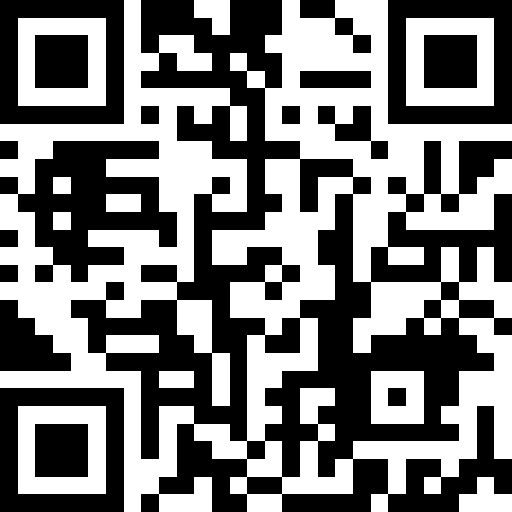Title Page<br>ISO 9001:2015 Audit Retro Track & Air Ltd. Note: This template has been reviewed to audit each department against specific ISO 9001:2015 criteria as opposed to the entire standard / checklist
-
ISO 9001:2015 Audit Retro Track & Air Ltd. Note: This template has been reviewed to audit each department against specific ISO 9001:2015 criteria as opposed to the entire standard / checklist
-
Conducted on
-
Audit Completed By:
-
Location
-
Department being Audited
-
This internal audit is completed inline with the ISO 9001:2015 Standard.
-
To minimise risk of auditing bias. It is recommended that the internal auditor does not audit their own department.
-
Upon completion of this audit, the auditor will consult with the auditee and key stakeholders for agreement. As necessary the QA Compliance Manager can adjudicate (if needed).
-
The QA Compliance Manager will register any non-conformance(s) within the internal audit NC Register and issue a Occurence Action Report (OAR) to the respective department Manager & key stakeholders to action accordingly.
-
The Department Manager must apply corrective action and return completed OAR to the QA Compliance Manager within the specified time. The Compliance Manager shall review all OAR's to ensure they are managed in a timely manner
ISO9001-2015 Audit Checklist
Introduction
-
This internal audit will evaluate the compliance of the department Management System in compliance with ISO 9001:2015 requirements. Remember to attach evidence to items where required, and to sign off and complete this assessment in the final section.
-
During the course of the audit, some documentation may be considered Confidential and thus photographic evidence may not be permitted. In this instance, record in the "Notes" section, "Document confidentiality, sighted SOP, Contract etc..." and record the document name and reference number reviewed.
Changes
-
Aligns with Clause 6.3 (Planning of Changes) and Clause 4.1 (Understanding the Organization and Its Context).
-
Has there been any significant changes in the past 12 months? (If YES, please elaborate and record brief summary). Note: A significant change may be considered as a change that has had an impact (positive or detrimental) on the department and/or normal operational processe
Compliance to Procedures
-
Aligns to Clause 7.5 (Documented Information) and Clause 8.5 (Production and Service Provision).
-
Does the department have company procedures (i.e. Work Instruction; Standard Operating Procedures; Forms etc) in place?
-
Are the company procedures (SOP, Work Instructions, Forms etc.) document controlled . Record evidence of such documents.
-
Verify how knowledge is maintained and made available for staff to fulfill their role. i.e. Training Docs, Procedures, Literature, Specification, WI's etc, (especially with new staff)
-
Has training been applied to existing and new staff to fulfill their role? How has this been documented (i.e. competency assessment, toolbox etc)
Management / Performance Review
-
Aligns to Clause 9.3 (Management Review), Clause 6.1 (Actions to Address Risks and Opportunities), and Clause 9.1.3 (Analysis and Evaluation).
-
Verify how the department continually improves. Does the department conduct Management / Performance reviews & evaluates KPI's; Risks & Opportunities that shall be addressed as part of continual improvement?
-
Verify what methods are used to monitor, measure and evaluate processes (KPI's?) to achieve intended results.
-
Are Risks & Opportunities identified with an action plan developed to address?
-
At what frequency are these Management / Performance reviews undertaken?
-
Verify status of actions from previous management reviews
-
Does the department conduct performance reviews (KPI's; Risks; Opportunities) for their staff?
-
Are job descriptions available for all staff within the department? (New and long term employees)
Non Conformance (NC) / Continuous Improvement
-
Aligns to Clause 10.2 (Nonconformity and Corrective Action) and Clause 10.3 (Continual Improvement).
-
Verify how internal & external non-conformance are considered & identified. What corrective actions are taken to address them. How is this managed?
-
How are NC's communicated
-
Is an NC register in place?
-
Are non-conformance's addressed and closed out in a timely manner (where applicable)
Communication
-
Aligns with Clause 7.4 (Communication) and partially with Clause 5.1.1 (Leadership and Commitment).
-
How are department staff aware of the business, department & personal objectives.
-
Do periodic meetings occur within the department
-
How are these meetings documented
-
Are actions assigned as part of these meetings? If so, are corrective action monitored for effectiveness?
-
Verify how departmental changes are communicated / managed. (example: New product / raw material introduction, New customer / Supplier, Service provider change, Product changes etc)
-
Verify how other means of communication may occur within the department
Training
-
Aligns to Clause 7.2 (Competence) and Clause 7.3 (Awareness).
-
Verify how the department ensures that the resources provided are suitable for the specific type of role / activities being undertaken (i.e training, competency assessment, feedback review mechanisms)
-
Are new employees being trained correctly? How is this managed & documented
Commercial (Customers) - Procurement (Approved Supplier / Service Provider) - Finance (Vendor Creation) - Human Resources (Employment)
-
Verify appropriate documentation is in place for Customers; Supplier(s); Service Provider(s); Vendors &/or Employees. Choose an example and follow process / documentation through
-
Verify how the department reviews contracts, order requirements (for delivery and post-delivery), Supplier, Vendor and Employee performance.
-
Does the department monitor & report KPI performance (eg. customer, supplier, vendor, employee). How is this completed and what is the frequency?
Tooling
-
Aligns with Clause 7.1.3 (Infrastructure) and Clause 7.1.5 (Monitoring and Measuring Resources).
-
Does the department having specilised/calibrated tooling
-
Are the tools tracked for calibration?
-
Are calibration records available and up-to-date for all tools requiring calibration?
-
Verify traceability of calibration to national or international standards.
-
Review with sampling the last calibration certificate and note its date and standard.
Customer Satisfaction
-
Aligns to Clause 9.1.2 (Customer Satisfaction) and Clause 8.2.1 (Customer Communication).
-
How does the department collect and analyze customer feedback?
-
Are there documented methods to address customer complaints or dissatisfaction?
-
Verify if there are trends in customer feedback (positive or negative) and how these are acted upon.
-
How is customer satisfaction data used to drive improvements?
Document Control
-
Relates directly to Clause 7.5 (Documented Information).
-
Verify if all documents (procedures, SOPs, manuals) are controlled and updated regularly.
-
Are obsolete documents promptly removed or clearly marked to prevent misuse?
-
Are obsolete documents promptly removed or clearly marked to prevent misuse?
-
How does the department ensure that only the latest versions of documents are accessible?
Risk Management
-
Covers Clause 6.1 (Actions to Address Risks and Opportunities) and partially Clause 9.1.3 (Analysis and Evaluation).
-
Are risks and opportunities beyond those covered under "Management/Performance Review" explicitly identified and assessed?
-
Verify the effectiveness of the risk mitigation strategies implemented.
-
How often are risks reviewed and updated?
Work Environment and Infrastructure
-
Aligns with Clause 7.1.4 (Environment for the Operation of Processes) and Clause 7.1.3 (Infrastructure).
-
Verify that the work environment is suitable for achieving conformity to product/service requirements.
-
Verify the availability and maintenance of necessary infrastructure (e.g., IT systems, machinery).
-
Are environmental conditions (lighting, temperature, noise) appropriate for the tasks performed?
Supplier Management
-
Verify how suppliers are evaluated and re-evaluated for approval.
-
Is there a documented process for managing supplier performance issues?
-
How are supplier audits or evaluations conducted, and how are results tracked?
Health and Safety (if applicable)
-
Though not explicitly an ISO 9001 requirement, aligns with Clause 7.1.4 (Work Environment).
-
Are health and safety measures in place and documented?
-
Verify how health and safety incidents are reported and addressed.
-
Is safety training conducted for employees regularly?
Audit Follow-Up
-
Related to Clause 9.2.2 (Internal Audit) and Clause 10.2 (Nonconformity and Corrective Action).
-
How does the department track and ensure the completion of corrective actions identified in previous audits?
-
Are there recurring issues from previous audits, and how are they being addressed?
Effectiveness of Corrective Actions
-
Corresponds to Clause 10.2.1 (Evaluating Corrective Actions).
-
Verify how corrective actions are implemented, monitored, and reviewed for effectiveness.
-
Are lessons learned from non-conformities or incidents documented and shared within the department?
Process Flow Verification
-
Relates to Clause 4.4 (Quality Management System and its Processes).
-
Verify that all key processes have been mapped and are being followed as per documented procedures.
-
Are there any bottlenecks or inefficiencies in current workflows? How are they addressed?
Continuous Improvement Projects
-
Aligns to Clause 10.3 (Continual Improvement).
-
Are there ongoing or completed projects focused on continuous improvement?
-
How are improvement ideas from staff encouraged and implemented?
Emergency Preparedness
-
Corresponds to Clause 6.1.1 (Risk-based Thinking) and indirectly supports Clause 8.5.3 (Preventive Action).
-
Verify if the department has emergency plans in place for critical situations (e.g., IT system failure, equipment breakdown).
-
How are these plans tested and reviewed?
Sign Off
-
I, the undersigned, have completed this audit in an accurate manner. I have attached evidence as required and declare this assessment complete.
-
Full name and signature of auditor
-
I, the auditee, accept all findings including any non-conformances raised and issued as part of this internal audit
-
Full name and signature of auditee














